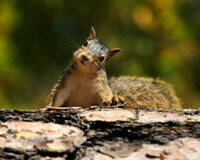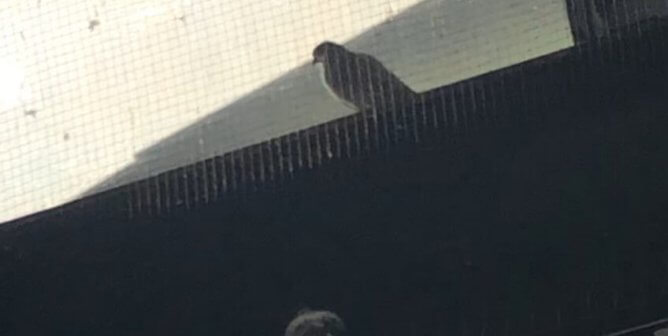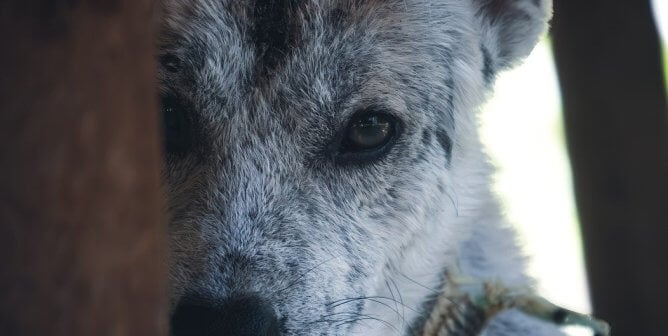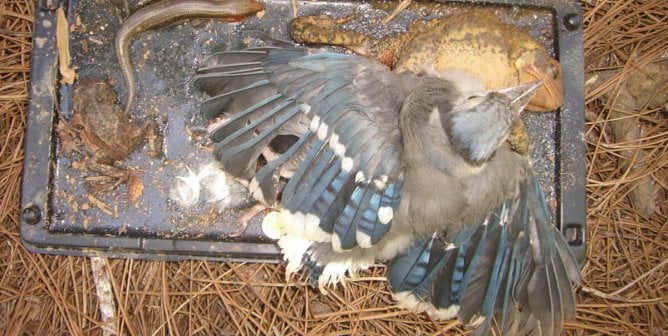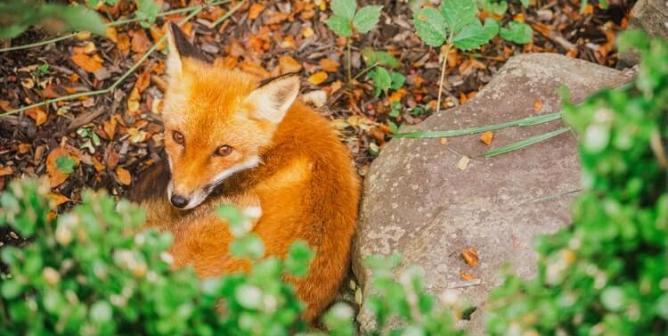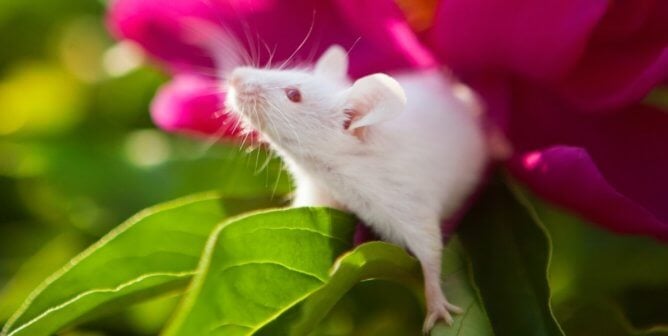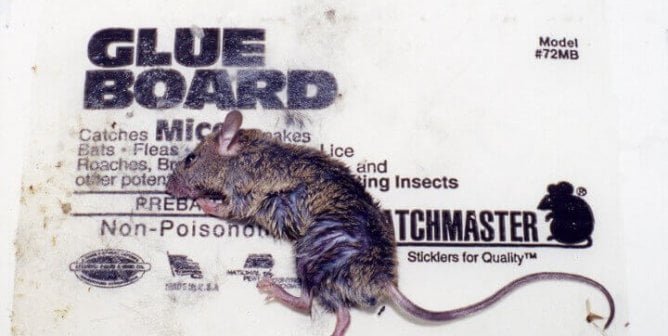Living in Harmony With Squirrels
About Squirrels
Members of the squirrel family include tree squirrels, flying squirrels, ground squirrels, chipmunks, prairie dogs, and woodchucks. Squirrels dig holes in lawns and gardens in search of roots, stems, bark, shoots, leaves, flowers, fruit, and nuts. These cute critters also like to “cache” or hide supplies, burying nuts and seeds to help them survive harsh winters.
Squirrels traditionally spend most of their time in trees foraging for food, bearing their young, taking shelter from the weather, finding food, and escaping from predators. Because humans have altered the landscape so extensively, squirrels have been forced to use almost anything that resembles a tree to hide from predators, take shelter from the elements, store food, and raise their young.
Squirrels give birth at varying times of the year, depending on the species and location. Courtship is characterized by frantic chases, normally with several males pursuing one female. Females give birth to between two and five babies, who are born naked and helpless. The mother squirrel raises them all alone, and young squirrels are weaned at 10 to 12 weeks. Their mother usually drives them away soon after that and may raise another litter of young before the fall.
Frequently, squirrels sit astonishingly still, with their tails arched over their backs and covering their bodies to keep them warm in the winter and cool in the summer. Contrary to myth, squirrels are almost never responsible for transmitting diseases to humans. In fact, squirrels are good environmental indicators, i.e., sick squirrel populations often prompt public health specialists to search for potentially hazardous concentrations of industrial byproducts and pesticides in the environment.
Squirrels are almost always ranked first in surveys asking people about their favorite urban/suburban wildlife species.. And why not? Who can resist grinning when a squirrel pauses while munching on an acorn to see if you’re still watching?
Did You Know?
Squirrels don’t always remember where they stored their supply of seeds and nuts for the winter. Because squirrels often fail to reclaim the buried food, abandoned seeds and nuts often take root, establishing trees and other plants in new locations. Thus, squirrels play a vital role in sustaining and expanding plant communities and ecosystems. Just imagine how many trees have sprouted because of squirrels’ short memories.
Humane Control
Despite squirrels’ many likeable attributes, some people don’t appreciate it when squirrels raid their vegetable gardens or tear holes in the roofs of their homes to build nests. Nevertheless, it’s important for all of us to remember that we should not vilify these animals; they don’t have a score to settle with us. They are simply doing what comes naturally to them in order to survive. Fortunately for squirrels and us, there are numerous ways to prevent these curious animals from damaging property without harming them in any way.
Squirrels in the Yard
Squirrels rarely, if ever, damage plants, so if you suspect that a squirrel has been sampling your tomatoes, it’s best to make sure that a squirrel is in fact the culprit before you attempt to remedy the situation.
Because squirrels are diurnal (active during the day), it is usually pretty easy to see for yourself if squirrels are responsible for damage to plants and vegetables. And, of course, if you know the damage occurs at night, you can rule squirrels out entirely and should focus your efforts on nocturnal animals in your area, such as raccoons and opossums.
If squirrels are digging up your yard in search of food, you can discourage them and other animals by planting non-edible flowers, such as daffodils, or laying a wire mesh over the soil after planting. The mesh must have openings big enough for the bulbs to grow through but too small for squirrels to dig into.
If squirrels are digging in the lawn, they’re either looking for food or storing food. It’s difficult to prevent squirrels from storing food, but more than likely, your lawn will recover from the digging and benefit from aeration before you even have time to address any perceived problems.
To prevent squirrels and other animals from frequenting areas of concern, you should explore ways to make the area undesirable by ensuring that there are no food sources available. Keep garbage containers sealed at all times and put your trash out only on the collection day.
Squirrels in the Home
Squirrels give birth at different times of the year depending on the species, and they often use attics, chimneys, sheds, or openings under porches and buildings as dens to raise their young. In order to avoid separating young squirrels from their parents, squirrels should not be evicted until the breeding season has ended. Trapping and moving the family is not recommended because it will almost inevitably lead to separation, and, as a result, baby squirrels may die.
When you’re ready to humanely remove the squirrels from your home, begin by thoroughly inspecting attics and eaves to find openings where the squirrels enter and exit, concentrating your efforts on areas where noises have been heard.
If you find no apparent points of entry, inspect the roof and the eaves and vents on the outside until you find the opening. If you find a nest and there are no immature squirrels, attempt to encourage the squirrels to go outside by placing a radio tuned to a talk-radio station inside the attic, along with several ammonia-soaked rags and/or a portable lamp.
When you are sure that the squirrel or squirrels have left, seal up the opening with 1/4- or 1/2-inch mesh hardware cloth or sheet-metal flashing, securely fastened. Be sure to extend the patch at least 6 inches beyond the hole in all directions in order to prevent the squirrels from gnawing around the patch. Trim overhanging limbs to prevent access to your home.
Listen carefully for the next day or so to be sure that no squirrel is trapped inside. Also, watch closely to see if a squirrel is persistent in attempting to regain entry. Mothers will go to great lengths to reunite with their young.
If for any reason you cannot determine whether the squirrels have left, do not seal the entrance. Instead, install a one-way door. You can make your own or you can order one from tomahawklivetrap.com.
Once you install the door, leave it in place until no more sounds have been heard from inside the attic for several days. The door can then be removed and the opening patched.
Once the squirrels have been evicted, you should not attempt to trap and remove squirrels from the property. Trapping and removing them will do nothing for long-term control, as the newly vacant niche will quickly be filled by squirrels and other animals from surrounding areas. Trapping can also be cruel because when adults are removed, young and vulnerable family members are left to starve. Relocating squirrels—even to wild or wooded areas—is illegal in many places and will likely result in their death because they will have trouble finding adequate food, water, and shelter and won’t have a natural immunity to foreign parasites and diseases. Relocated squirrels are also killed in territorial maulings.

